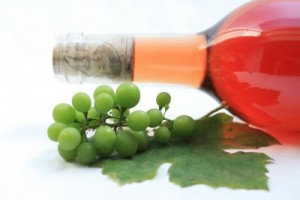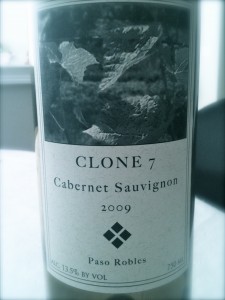 What is it about summertime that turns even the most ardent red wine drinkers into white wine sippers? Is it the hot summer days? The need for something cold and refreshing? Well, yes. But it’s also the acidity found in many white wines. The natural acids found in grapes (eg. tartaric, malic, citric) begin to decrease at the moment the grapes begin to ripen, or when the sugar content begins to increase. Winemaking is a balancing act between sweet (sugar) and sour (acid) in which the winemaker must harvest the grapes at the optimal time when sugar and acid are well balanced. A good amount of acidity adds brightness to a wine. Too much acid, and wine will taste tart or even sour. Too little acid, and the wine will appear what is often referred to as “flabby” or “flat.”
What is it about summertime that turns even the most ardent red wine drinkers into white wine sippers? Is it the hot summer days? The need for something cold and refreshing? Well, yes. But it’s also the acidity found in many white wines. The natural acids found in grapes (eg. tartaric, malic, citric) begin to decrease at the moment the grapes begin to ripen, or when the sugar content begins to increase. Winemaking is a balancing act between sweet (sugar) and sour (acid) in which the winemaker must harvest the grapes at the optimal time when sugar and acid are well balanced. A good amount of acidity adds brightness to a wine. Too much acid, and wine will taste tart or even sour. Too little acid, and the wine will appear what is often referred to as “flabby” or “flat.”
Acid in white wine can produce a thirst-quenching sensation. White wines with good acidity both pair well with a wide variety of foods and prepare the palate for the food. Acid helps wine stand up to foods high in salt, fat and rich proteins. Another benefit of acid is its role in wine longevity, helping some wines age longer and preventing browning and microbial spoilage. So, instead of grabbing a glass of California chardonnay with oak and high alcohol content that make it a food pairing problem, reach for a nice, crisp sauvignon blanc or riesling instead. Cheers!
Weekend WineKnow
The Summer Wine Acid Test
Loose Tannins
 If you drink red wine, you have probably at least heard the word “tannins” in connection with either the taste or the physical sensation produced when you drink the wine. But what exactly are tannins? Tannins are phenolic compounds present in the skin, seeds and stems of grapes, and in the oak used for barrels. The longer the juice of red grapes is kept in contact with these solid parts, the more tannic the wine can become. Tannins are detectable in two ways: 1) a bitter taste; and 2) astringency – a cotton mouth feeling that occurs when tannins react with protein in the drinker’s saliva. They are also responsible for intense pigment in wine. Tannins bond with proteins in wine and precipitate out as the wine ages, causing the wine to become less harsh and less intense in color. Although oak cooperage can also contribute to tannins, it is not a significant amount. Tannin levels vary from grape to grape. The four most tannic grapes in the world are cabernet sauvignon, nebbiolo, syrah, and tannat. Pinot noir, by comparison, has half the tannin content of cabernet sauvignon. Personally, I just adore loose tannins. Cheers!
If you drink red wine, you have probably at least heard the word “tannins” in connection with either the taste or the physical sensation produced when you drink the wine. But what exactly are tannins? Tannins are phenolic compounds present in the skin, seeds and stems of grapes, and in the oak used for barrels. The longer the juice of red grapes is kept in contact with these solid parts, the more tannic the wine can become. Tannins are detectable in two ways: 1) a bitter taste; and 2) astringency – a cotton mouth feeling that occurs when tannins react with protein in the drinker’s saliva. They are also responsible for intense pigment in wine. Tannins bond with proteins in wine and precipitate out as the wine ages, causing the wine to become less harsh and less intense in color. Although oak cooperage can also contribute to tannins, it is not a significant amount. Tannin levels vary from grape to grape. The four most tannic grapes in the world are cabernet sauvignon, nebbiolo, syrah, and tannat. Pinot noir, by comparison, has half the tannin content of cabernet sauvignon. Personally, I just adore loose tannins. Cheers!
A Rosé By Any Other Name…
It seems everyone is drinking rosés right now, even those of us who used to eschew them as not being serious enough to tempt our palates. I confess to being a convert in this regard. But many people still seem confused about how a rosé is actually made. The most common misconception I have run across is the belief that rosé is made from red wine diluted with white wine to achieve the pink color. Let us consider this misconception dispelled. Rosé is made by crushing red wine grapes to begin extracting color and flavor from the skins. Once enough color is extracted to produce that beautiful pink hue (usually between one hour and two days), the solids are removed. The juice is then fermented with the same method used for white wine. Dry or semi-sweet, these wines are fruity with medium to high acidity.
As for other names…sweeter rosés are often labeled “blush,” single variety wines may be termed “white” as in “white zinfandel, and these style wines from Spain, Italy and Germany are called rosado, rosato and weissherbst, respectively. But a rosé by any other name…
Any Port in a Storm
For those of you unable to finish a bottle of red in one sitting and tired of having opened wine sit around until it goes bad, why not consider sipping a Port instead? Most Ports will last anywhere between 1 week and 6 months after opening, depending on their type and how they are stored. A ruby or young tawny will last 2 weeks to 3 months, while an aged tawny can last anywhere from 1 month to 1 year.Traditional Late Bottled Vintage Port (LBV) is not quite as hardy, lasting 1 day to 2 weeks. Port should be stored in the refrigerator or at least in a cool place for best longevity. And if you happen to have a bottle of vintage Port more than 30 years old, make sure to seek out a pair of Port tongs. Corks of that age can be quite fragile and unable to withstand the use of a corkscrew. Traditionally, Port tongs are heated until red hot and then clamped around the bottle neck just below the cork for ten seconds. The tongs are then removed and cool water is poured over the neck which causes a single crack that severs the neck from the bottle. The bottle neck with the cork still inside is lifted off the bottle and discarded. What an exquisite gift the tongs would make for the wine lover on your gift list who has everything. Cheers!
Comfortably Numb
During the hot days of summer, many a red wine drinker has been known to turn to white wine in their search for something cold to drink. Although cold white wines can be thirst quenching, most people are guilty of serving them too cold, taking them right out of a 38 degree refrigerator. This is a condition known as “numbing.” When served too cold, both the aromas and the flavors of white wine are harder to detect because the colder temperature prevents the esters from volatizing, providing less feedback to your taste buds. So what is the ideal temperature for serving that special wine this holiday weekend? Sparkling, off-dry and sweet white wines will all reward you at 45 to 50 degrees. Dry white wines and those popular summer rosés show best between 50 and 60 degrees. If forced to chug cheap white at a well-intentioned but clueless friend’s bbq, by all means, go numb. Or, better yet, grab a beer. Cheers!
Cold Beaujolais?
If you have a bottle of Beaujolais to enjoy, pop it into the refrigerator for 15 minutes before serving. Slightly chilling this wine actually increases its fruit and spice flavors, and is customary in the region. On Sundays, jugs of Beaujolais are placed in buckets of cold water under the shade of a tree in the center of town for the local boules players to imbibe. Cheers!